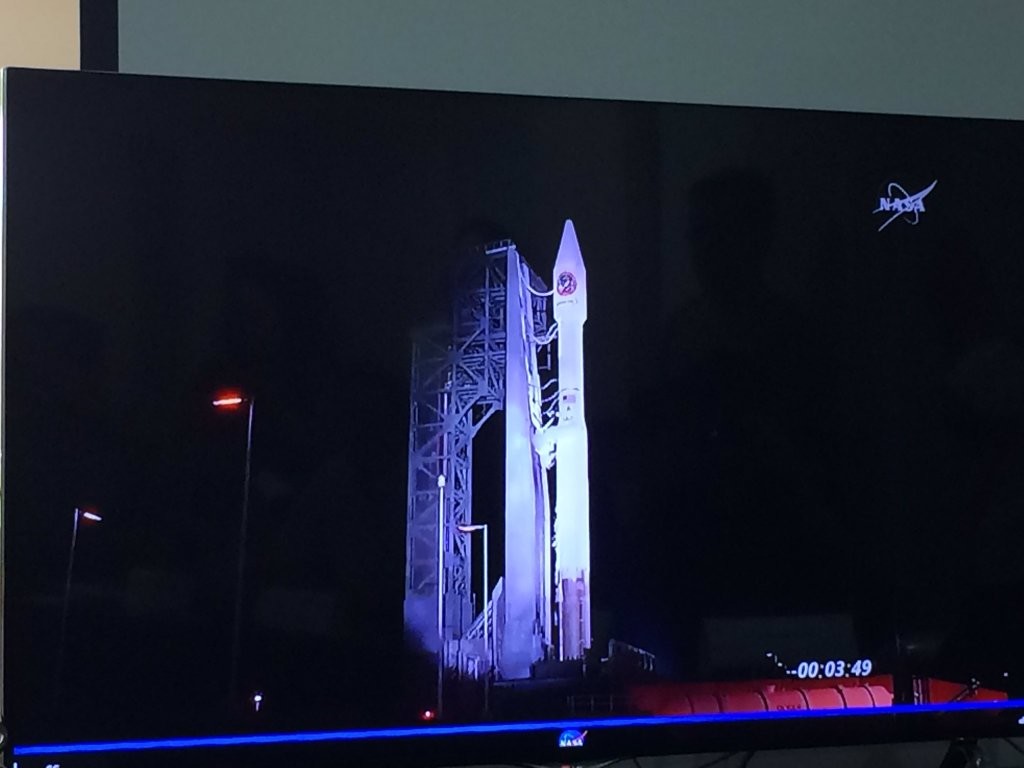1st PH-made satellite ‘Diwata’ begins journey into space
Diwata is a step away from watching over the country as it ventured into space Wednesday morning.
Diwata-1, officially named the Philippine Earth Observation Microsatellite, took off at exactly 11:06 a.m. (Manila time) from Cape Canaveral Air Force Station in Florida. It was among the around 3,375 kilograms of science and research, crew supplies, vehicle hardware and 20 nanosatellites aboard Orbital ATK’s Cygnus spacecraft. Cygnus was propelled into space by the Atlas V rocket.
Department of Science and Technology (DOST) officials, led by Carlos Primo David, and University of the Philippines officials, led by UP Diliman Chancellor Michael Tan watched in anticipation the live feed of the launch at UP’s Electrical and Electronics Engineering Institute. In Florida, Science Undersecretary for Research and Development Amelia Guevara and Phil-Microsat program head Joel Marciano Jr. oversaw the launch.
“Today is a momentous event. All this time we’ve been looking at other countries venturing in space, celebrating with them even though we have no part in it. We may not have launched the rocket but a piece of equipment there belongs to us. This is the first step of the challenge in venturing into space and developing our own space technology,” David said.
READ: 1st PH-made satellite set to go into space
Article continues after this advertisementAlso watching via live feed from Tohoku and Hokkaido in Japan are the nine DOST and UP scientists and engineers who worked on Diwata. They are Juan Paolo Espiritu, Benjamin Magallon, Gerwin Guba, John Leur Labrador, Julian Marvick Oliveros, Kaye Kristine Vergel, Ariston Gonzales, Delburg Mitchao and Harold Paler.
Article continues after this advertisementGonzales said that he is happy that the launching was successful, but noted that he remains “nervous” of the more important stage which is the release of Diwata from the ISS.
“We are hoping for the best and we hope that it, too, will be successful,” Gonzales said.
Diwata-1’s launch today marks the third time the Philippines sent a hardware into space. The first was in 1996 with Agila 1, followed a year later by Agila 2. But unlike Diwata-1 that was made and codeveloped by Filipino engineers, the Agila satellites were both privately-owned communication satellites bought abroad.
READ: First PH-made satellite launched Wednesday
Within two weeks, Diwata 1 is expected to be finally released into orbit, where it would stay for around 20 months at 400 kilometers from Earth. During that period, David said that Filipino scientists and engineers based in Tohoku, Japan, will have control of the microsatellite that will take an average of 3,600 high-resolution images of the country to be used for disaster response and mitigation, among others.
The Cygnus spacecraft carrying Diwata is expected to dock the ISS at around 6:20 p.m. Wednesday (Manila time). CDG
